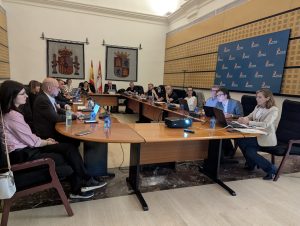There are two significant and related challenges defining human progress. One is the need to adapt to a constantly transforming world. The other is the need to communicate and incorporate those adaptations into functioning and diverse communities. Indeed, the integration of adaptive strategies into viable social institutions has charted the course of human history.
Today, cultural changes, coupled with scientific and technological advances, are occurring with such rapidity that we find ourselves in a continually emerging “new world” – one that requires constant awareness and adaptation. Having to continually develop strategies to reconcile the conflict between what we know and what is constantly changing presents us with a set of ongoing challenges. The 21st century is clearly emerging as a crucial time. Recognizing the major transformations associated with the unanticipated consequences of technology and climate change is essential for adaptation, strengthening community, and ultimately, our survival.
One of the oldest and most successful survival strategies is our capacity to imagine and tell stories. We have a unique ability to remember the past, recognize the present and anticipate the future. With memory and a process for integration, we have evolved numerous formats for telling our history, narrating the present and imagining our future. We are a story-making species that collectively refers to our storytelling as the arts. Whether it is literature, poetry, music, performance, ritual, or visual images, our arts express who we are and give meaning to our lives.
We are a story telling species! Ellen Dissanayake in her book, What Is Art For?, suggests that art is our unique adaptation strategy whose purpose is to build and strengthen community, which is essential for survival. Elders guiding youth into adulthood is one of our most important and enduring stories. Over a hundred years ago this story was named rites of passage. Rites of passage is the story – the art – of how we transmit essential information to our children. All cultures have given form to this unique process for transmitting survival strategies that strengthen a community’s ability to nurture, grow and support life-affirming individuals.
The time-tested principles of this defining village survival story – rites of passage – has been shared in a framework for youth and community development through rites of passage known as ROPE®, the Rite of Passage Experience©, www.rope.org. Since its first introduction into communities in the early 1980s, over 100,000 youth and their families have participated in remembering and adapting this school-community collaborative story. Evidence of ROPE®’s achievements are well documented. They underscore evolutionary biology’s belief that a species will not maintain any behavior for very long if that behavior does not serve its survival. For thousands of years across many cultures, rites of passage have been instrumental in building a community’s capacity to guide youth through the challenging passage to adulthood while strengthening the bonds of community.
By: William Lavine, DMD, MsD & Hyacinth Douglas-Bailey, JD With David Blumenkrantz, PhD, EdM
© 2013 The Center for the Advancement of Youth, Family & Community Services. Inc.


